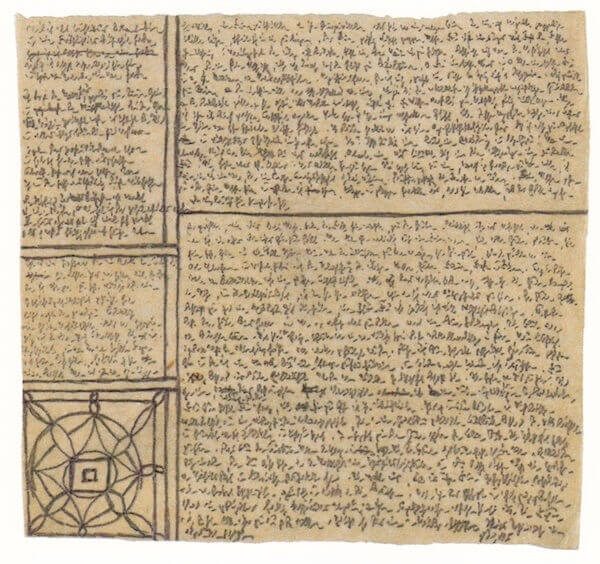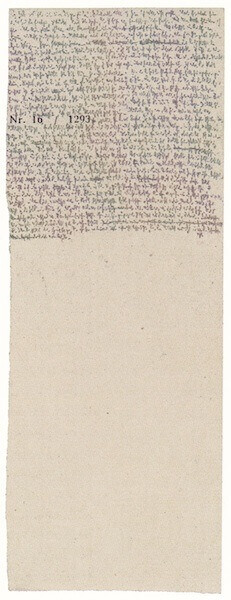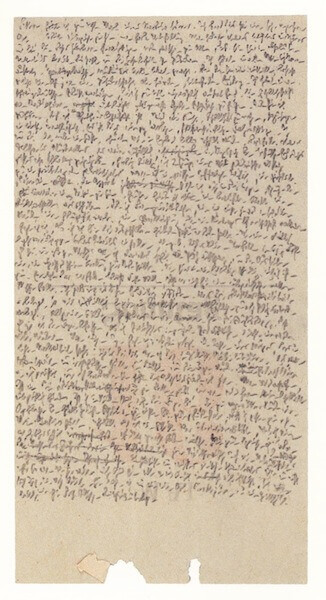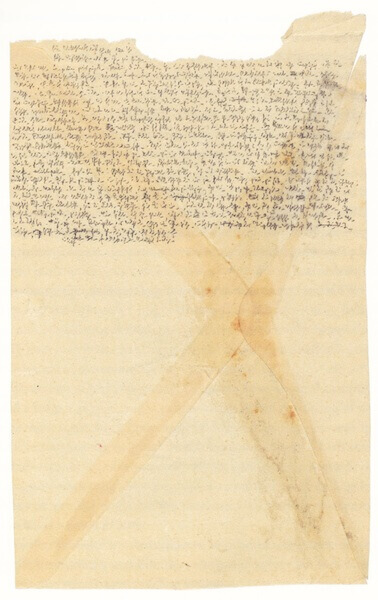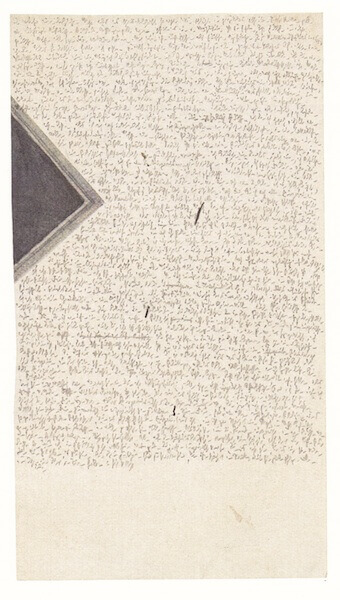Robert Walser’s “Microscripts” are some of the most visually interesting pieces of 20th century writing. The tightly-packed miniature ‘Kurrent’ script used by Walser presages later developments in drawing – Brice Marden’s shell drawings immediately come to mind as do works by James Castle, Joesph Beuys, Cy Twombly and Henri Michaux.
More interesting than the microscripts’ visual connection with later developments in drawing, however, is the effect Walser’s method has on the resulting prose – namely an uncanny ability to evoke spatial and temporal movement akin to that in painting.
Like paintings, which can be experienced at once as a whole, Walser’s compressed prose (rarely more than a page or two) constructs full narratives than can be consumed rapidly – nearly ‘at a glance’ as it were. Their short length allows the reader to revisit the work in detail, focusing on sentences, phrases, or words as one might examine the painted passages or marks on a canvas.
What interests me here is a face, a figure, a human being, a destiny. 1
Walser’s sentences move the reader through space and time with unique telescoping structures. He often starts a sentence with an implied intimate description only to find that description ending up in the historical past.
Fear raced through her interiorities much like a horde of Huns who, according to world history, sped and dashed through the Europe of Early Medieviality.” 2
The rapid narrative movement can be shocking and slightly disorienting in effect but allows for descriptions to become micro-narratives on their own.
Last night in a dream, my hands were transformed into rotten, crumbling towers. A ruin, I mean to say an aging millionaire, once bequeathed to me one hundred thousand francs, which in short order I squandered. 3
These sentences become tiny stories unto themselves, each unusually crucial to both structure and narrative drive of the whole piece.
One night, by the way, I felt a leathery, villainous hand touching my face. This terrifying experience imparted to me a fear that was Mon-Blanc-like in its monumentality.” 4
Reading Walser’s Microscripts one thinks of Cézanne. Cézanne’s brushstrokes, each so important to the whole image; simultaneously hold the picture plane and define a distant visual location through their color and size.
Walser’s constructions of sentence-stories also conjure thoughts of Sienese predella paintings and their stories within stories. Walser’s writing, at once compressed and expansive, freely connects events, objects and observations as a painter might. That they have hidden encoded in strange and prescient images for nearly thirty years seems fitting. For visual artists, the Microscripts offer up a wealth of visual and narrative inspiration.
Robert Walser, Microscipts, translated from the German and with an introduction by Susan Bernofsky, New Directions/Christine Burgin Gallery, 2010.
Notes
1 My subject here is a victor, Microscript 50, p.65.
2 New Year’s Page, Microscipt 389, p. 106.
3 New Year’s Page, Microscript 389, p. 105.
4 New Year’s Page, Microscript 389, p. 107.

